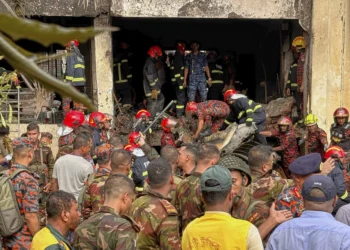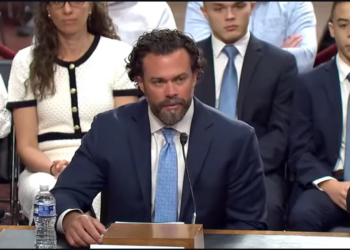Thousands of sensitive documents related to the Russia collusion hoax were found stuffed in burn bags inside a secret room at the Federal Bureau of Investigation (FBI), including the classified appendix to Special Counsel John Durham’s final report on the FBI’s involvement in the hoax.
Burn bags are the standard disposal method for sensitive documents designated classified or above. The bags with the Russia hoax documents were reportedly found in the secret room by FBI Director Kash Patel, according to Fox News, which was the first outlet to report on the bags’ existence.
The appendix will be declassified and sent to Senate Judiciary Committee Chairman Chuck Grassley, R-Iowa, after coordination among Patel, Central Intelligence Agency (CIA) Director John Ratcliffe, Director of National Intelligence (DNI) Tulsi Gabbard, Attorney General Pam Bondi, and acting National Security Agency (NSA) Director William Hartman.
“Ultimately, the release of the classified annex will lend more credibility to the assertion that there was a coordinated plan inside the U.S. government to help the Clinton campaign stir up controversy connecting Trump to Russia,” a source told Fox News.
According to the source cited by the outlet, some of the information in the classified appendix will show that foreign sources had knowledge of the FBI helping to spread the Russia collusion narrative before the agency launched the Crossfire Hurricane operation to go after the Trump campaign in 2016.
The source said the intelligence collected from the foreign sources forecast what the FBI would do “with alarming specificity.”
“Mere days after this intelligence was collected, the FBI launched Crossfire Hurricane,” the source stated, adding, “It’s really hard to see how Brennan, Clapper and Comey are going to be able to explain this away.”
Patel apparently found the documents in a hidden sensitive compartmented information facility (SCIF), which he may have referenced last month on Joe Rogan’s podcast, detailing a room with hard drives and documents that “no one had ever seen or heard of.”
“Me, as director of the FBI, the former ‘Russiagate guy,’ when I first got to the bureau, found a room that Comey and others hid from the world in the Hoover Building, full of documents and computer hard drives that no one had ever seen or heard of,” Patel told Rogan. “Locked the key and hid access and just said, ‘No one’s ever gonna find this place.’”
The burn bag documents come after revelations that the FBI’s own case management database also allowed agents to hide evidence.
As The Federalist’s Margot Cleveland reported, documents related to the FBI’s targeting of the Trump campaign were “rendered invisible” by specific coding in the database, called Sentinel.
When investigators were trying to look into the “origins and handling of Crossfire Hurricane,” documents were systematically hidden from them, and even senior officials were kept in the dark.
While Sentinel has a “Restricted Access” designation, the existence of such a file will show up in a search, but the contents may not be accessible. With the “Prohibited Access” designation, the existence of that evidence will not show up, and therefore will remain hidden from investigators who might need the information to determine whether the FBI or another agency engaged in wrongdoing.
“A keyword search won’t return a message saying you lack clearance, it will return a false negative, as if the records simply don’t exist. That’s a massive problem, not just for Brady obligations, but for Congressional oversight, FOIA requests, and even the FBI’s own investigations,” Hans Mahncke, a contributor to The Federalist, said on social media. “Agents are misled into believing nothing exists, rather than being told the material is restricted. The constitutional implications — for due process, transparency, and the integrity of the justice system — are enormous.”
According to Cleveland, former Special Counsel Robert Mueller’s office used the “Prohibited Access” tag to hide evidence from future investigators, which raises the question of how much evidence may have been concealed from Durham’s investigation.
The existence of the physical documents in the burn bags suggests that there may have been many more that made their way to the incinerators. The vast majority of the bags’ contents remain unknown. And it is not yet possible to know what was hidden electronically with the “Prohibited Access” tag.
As The Federalist reported, the Intelligence Community Assessment so critical to the Russia hoax was based on “one scant, unclear, and unverifiable fragment of a sentence from a single HUMINT [human intelligence] report — published under DCIA Brennan’s December 2016 order.”
That sentence fragment was such a weak snippet of intelligence material that senior intelligence officials did not want to include it. But former CIA Director John Brennan insisted on its inclusion in order to fabricate the impetus for the left’s Russia collusion narrative.
Breccan F. Thies is a correspondent for The Federalist. He previously covered education and culture issues for the Washington Examiner and Breitbart News. He holds a degree from the University of Virginia and is a 2022 Claremont Institute Publius Fellow. You can follow him on X: @BreccanFThies.
















